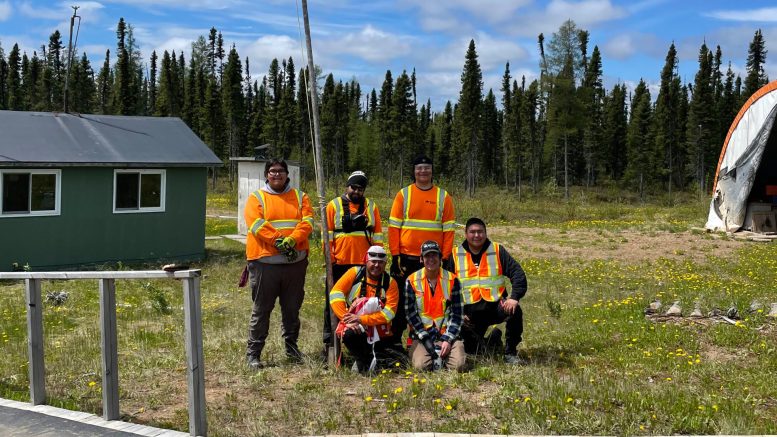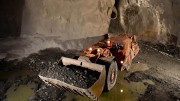At the recent Indigenous Led Projects Forum in Toronto in late September — the first event of its kind — co-host Michael Fox shared some of the big changes that he’s seen in Canada’s Indigenous communities over his lifetime.
The 54-year-old said it wasn’t until the 1980s that an Indigenous family member owned a car — a symbol of success. Later, the high water mark was the first Indigenous person he knew who owned their own house.
Fast forward to today, and Fox, the founder and president of consultancy Indigenous Community Engagement (ICE), and co-chair of PDAC’s Indigenous Affairs Committee, sees an entirely different level of economic possibility emerging.
“I think the new Indigenous ecosystem is about Indigenous-led environmental assessments, Indigenous-led projects, Indigenous-led economies,” he said.
Fox contrasts that with historic public policy, which created an Indigenous ecosystem of “complete dependency by design,” and “created the socioeconomic conditions you see across Canada” in many Indigenous communities. “It’s only (recently) that there’ve been efforts to try to create inclusive mechanisms to overcome the exclusionary practices of the past,” he says.

Michael Fox, founder and president of consultancy Indigenous Community Engagement, and co-chair of PDAC’s Indigenous Affairs Committee. Indigenous Community Engagement photo
Fox says that the ecosystem has started to evolve towards Indigenous participation, Indigenous partnerships and beyond, as communities seek to take control of their economic destiny. In other words, something well past mere consultation and the now-standard impact benefit agreements.
That includes new developments in Indigenous finance, ownership, and in one of the most important trends with regard to resource development, the emergence of Indigenous-led environmental assessments.
Two of ICE’s clients, the Ring of Fire First Nations communities, Marten Falls and Webequie, are advancing their vision for an all-season road leading into the Ring of Fire and their communities (the road is being advanced in three sections, with each community leading EAs for their own section, and co-leading an EA for a third section). In a first for Ontario, Indigenous proponents are leading the environmental assessment process — without a government or private sector partner, although it is being funded by the province.
Fox says the process shows the clear benefits to Indigenous-led environmental processes.
“They know their land,” he says, adding they’ve used that knowledge, including their understanding of the landscape, the location of sacred sites or other sites of cultural significance, and land utilization patterns, to plot the proposed route into the Ring of Fire and their communities.
“When you’re designing a road and if the community is leading it, it’s going to save you time and energy in the future. If you’re just an outside third party and you’ve got this conceptual route ‘cause you think it’s the most technically feasible based on your own desktop train analysis, you may end up spending a lot of time re-routing it as you’re interacting with the communities. When a community helps or is leading it, they can actually help shape that project (so it’s) socially acceptable by the community.”
While Indigenous-led EAs are a recent development, there are a handful either under way or completed. Those include the Squamish Nation’s EA for the Woodfibre LNG project in B.C., which resulted in the First Nation being the first non-treaty Nation to be recognized as a regulator.
Given that fear of negative environmental impacts are often the number one concern for Indigenous communities in assessing resource development on their traditional lands, Indigenous-led EAs offer companies a chance to build trust and earn buy-in from communities, while demonstrating a commitment to reconciliation.
Although there are clear benefits in terms of greater project certainty, there are also potential drawbacks: Cost, and complexity could increase while timelines could be either shortened or lengthened, depending on the project and community.
And how this will fit in with the apparent new urgency of the Canadian and U.S. governments to get projects built more quickly — as evidenced particularly by recent comments from Canada’s Natural Resources Minister Jonathan Wilkinson about the need to streamline federal and provincial processes in order to meet clean energy requirements — is an open question.
Most of all, mining companies fear a loss of control if they agree to hand over the EA process to be led or co-led by an Indigenous community, says Hans Matthews, a geologist, founder of the Canadian Aboriginal Minerals Association, and a member of Wahnapitae First Nation in northern Ontario.

Hans Matthews, founder of the Canadian Aboriginal Minerals Association and a member of Wahnapitae First Nation and the Indigenous-focused consultancy Odonaterra. Odonaterra photo
“There’s still a lingering lack of trust,” says Matthews, who also recently joined Odonaterra, an Ontario-based consultancy specializing in supporting communities with Indigenous-led impact assessment, environmental community planning, and socioeconomic monitoring in resource development.
“That’s been the barrier to (partnering on) this full-blown environmental assessment process. The company would rather put their trust in their VP of Environment to manage a big company like Stantec or Golder, or Wood….” Matthews says.
“They won’t go to a community and say, ‘Hey, we’ll fund the EA process like we would normally have to do, and you guys manage the Stantecs, the Golders, the Woods and work with their scientists and merge traditional knowledge with Western knowledge. And at the same time, we can be partners in the development.”
Matthews, who was involved in the joint review panels for the Grassy Mountain coal project in Alberta and the Northern Gateway Pipeline — believes the outcomes for those failed projects could have been different if Aboriginal groups had more ownership over the environmental assessment process.
He adds that in addition to avoiding delays, greater Indigenous involvement in EAs can help build capacity in communities — something that will benefit the resource industry, too.
“It’s not necessarily going to be a cakewalk, but it’ll be certainly a lot easier for companies to communicate with (communities) and for Indigenous groups to communicate with them.”






Be the first to comment on "Indigenous-led EAs are on the horizon"